NCERT Solution for Class 10 Mathematics Chapter 10 - Circles Page/Excercise 10.1
Question 1

Solution 1
Question 2


Solution 2
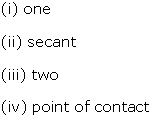
Question 3


Solution 3
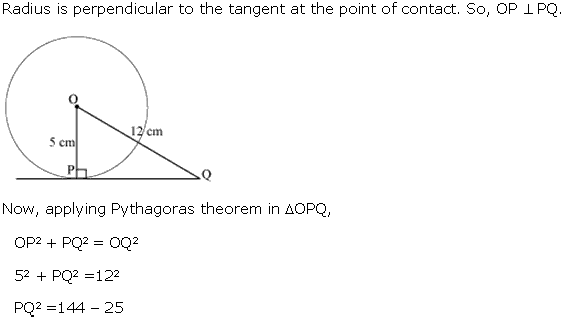

Question 4

Solution 4
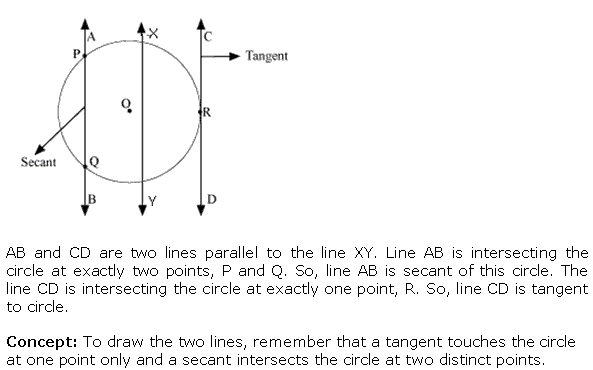
NCERT Solution for Class 10 Mathematics Chapter 10 - Circles Page/Excercise 10.2
Question 1


Solution 1
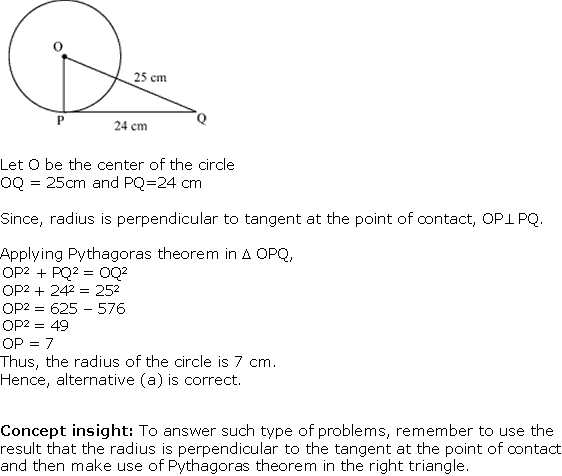
Question 2
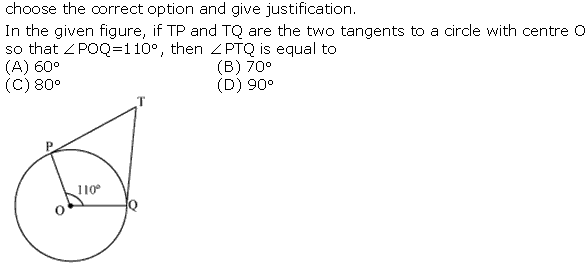

Solution 2
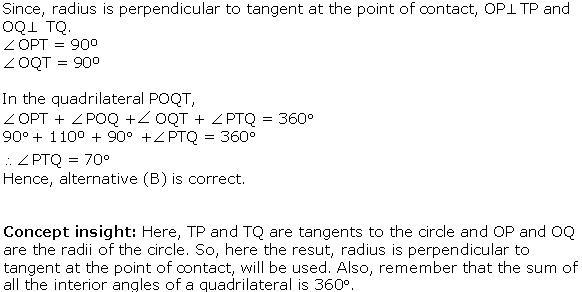
Question 3


Solution 3


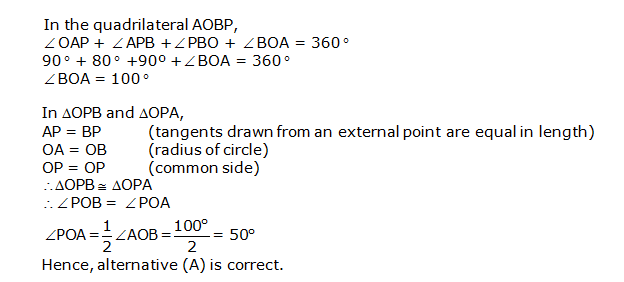

Question 4

Solution 4
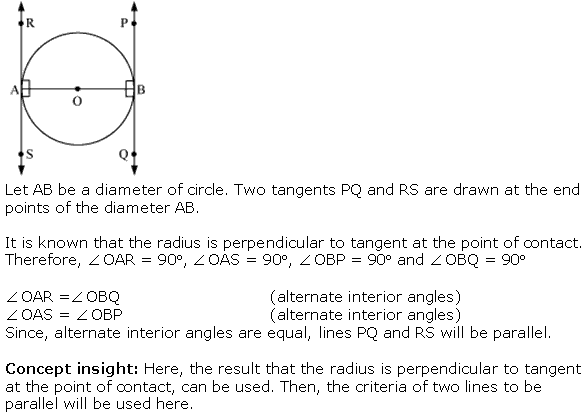
Question 5

Solution 5
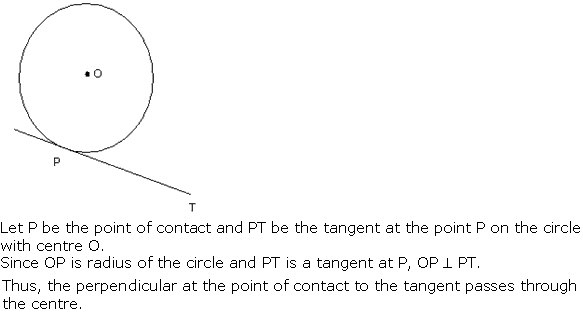
Question 6

Solution 6
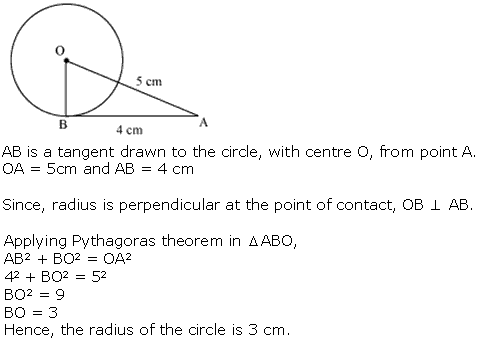
Question 7

Solution 7
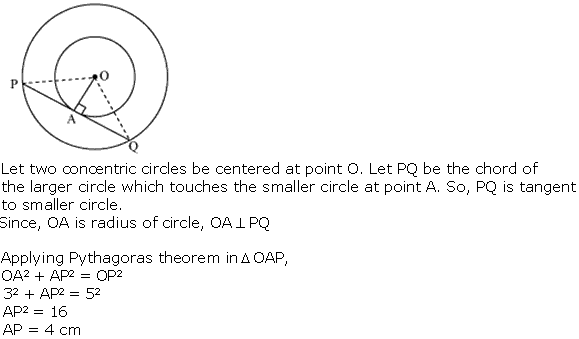

Question 8
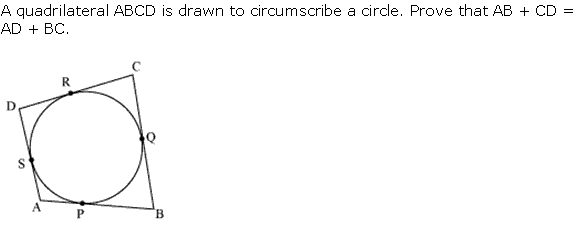

Solution 8
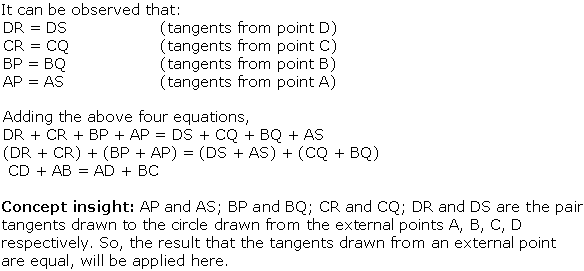
Question 9
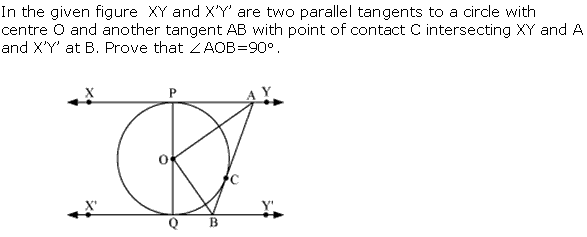

Solution 9


Question 10


Solution 10
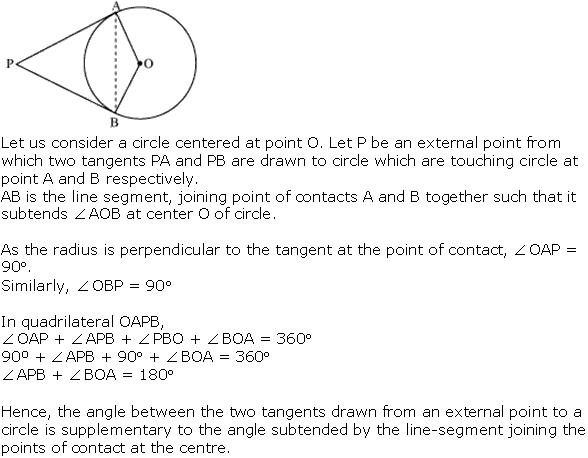
Question 11
Prove that the parallelogram circumscribing a circle is a rhombus.
Solution 11
Since, ABCD is a parallelogram,
AB = CD (i)
BC = AD (ii)
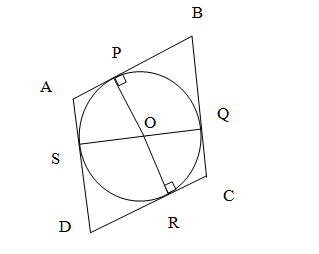
Now, it can be observed that:
DR = DS (tangents on circle from point D)
CR = CQ (tangents on circle from point C)
BP = BQ (tangents on circle from point B)
AP = AS (tangents on circle from point A)
Adding all the above four equations,
DR + CR + BP + AP = DS + CQ + BQ + AS
(DR + CR) + (BP + AP) = (DS + AS) + (CQ + BQ)
CD + AB = AD + BC (iii)
From equation (i) (ii) and (ii):
2AB = 2BC
AB = BC
AB = BC = CD = DA
Hence, ABCD is a rhombus.
Question 12
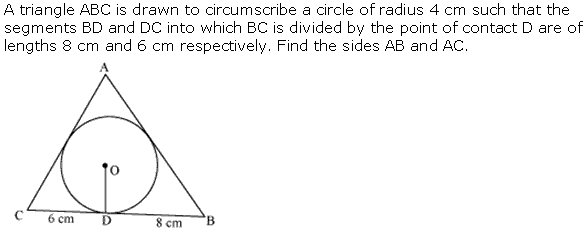

Solution 12
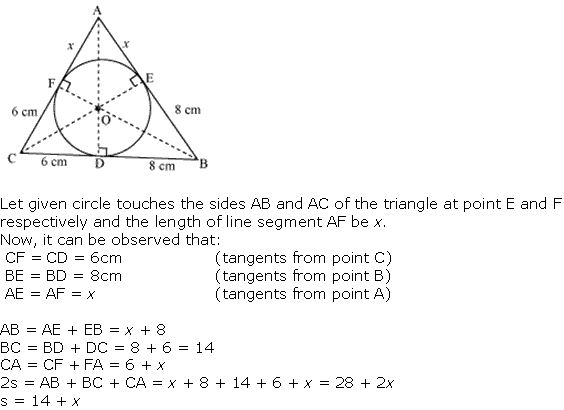

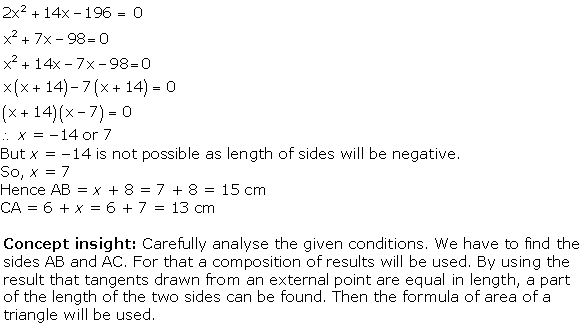
Question 13
Prove that opposite sides of a quadrilateral circumscribing a circle subtend supplementary angles at the centre of the circle.
Solution 13
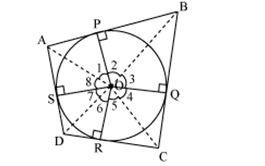



No comments:
Post a Comment